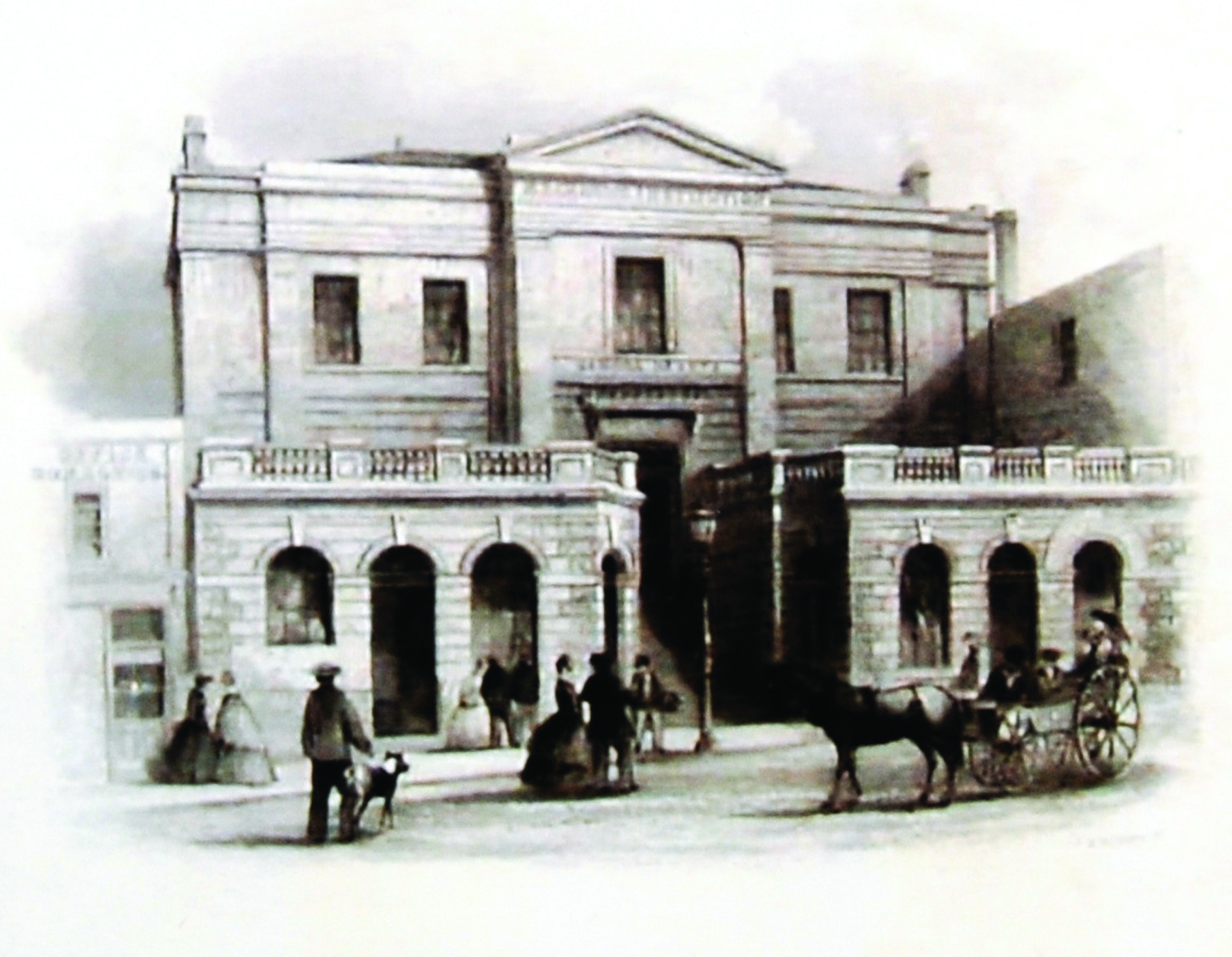The Melbourne Athenaeum Library will be closed from 4:00pm on Tuesday December 23. We will reopen at 10:00am Tuesday January 6.
We wish all our members a very festive holiday season.
The story that unfolds here is about a unique organisation that continues to contribute to the city’s culture in a building first completed in 1842.
The Melbourne Mechanic’s Institute, which became the Melbourne Athenaeum, housed the city’s first official library, first art gallery, and even the town council meetings until the Melbourne Town Hall was built.
Of Collins Street’s many iconic buildings, the Melbourne Athenaeum is alone in housing the same institution and serving the same purpose for the entirety of the almost 200 years it has existed. It was originally named the Mechanics' Institution when formed in 1839.
Members of the not-for-profit organisation, by sheer determination and against all odds, purchased land and paid for a building in the centre of the new town.
Starting as a modest, two-storey structure, the Mechanics' Institution's first building was completed in 1842.
As Melbourne gradually became a more complex city, the organisation and its building evolved to accommodate the changing needs and sophisticated pastimes of the people of the city.
The building, gradually enlarged over the years, became the elegant and familiar edifice situated next to the Town Hall, in Collins Street.
The stories of the land purchase and the issues concerning the completion of the building reflect the history of the new, developing town.
European settlers arrived at Port Phillip in 1835. When Governor Sir Richard Bourke of New South Wales was given authority to acknowledge the settlement in 1836, a census of that year showed there were 13 buildings, 142 men, 35 women, 26,500 sheep...
Thomas Osborne purchased two allotments of land on behalf of the newly formed Mechanics' Institution in 1840, at an auction, for a low £142/10/- per allotment, the upset price being pre-arranged with the auctioneers.
The land fronted Collins Street and extended to Little Collins Street. When knowledge of the transaction...
From the founding of the institution, the establishment of a museum was identified as an important part of meeting the purpose to impart literary, scientific and other useful knowledge to members and the general public. In 1840 the institution's annual general meeting noted that the committee would welcome...
The tender of Donovan and Crosbie was accepted for construction of a building, to the plan of Mr O'Hagan the architect, for £1,920. The building was completed in December 1842.
The first tenant was the Corporation of Melbourne (now called the Melbourne City Council) which stayed until they could move into the new...
By 1852 a larger hall was needed. The library was expanding and the increasing number of donated museum objects needed to be stored properly.
The committee raised enough money to buy back a small piece of land, at the back of the building, planning to build a large hall on the ground floor and additional wings on either side at the front. Builders tendered for the...
Mr Biers, elected president in 1871, announced he would build the long-awaited new hall during his presidency. With Alfred Smith's design and a mortgage obtained with the help of Mr Payne, the project proceeded.
The plans, with the additions and amendments that had been agreed upon, having been completed, tenders were called for, and that of Messrs Turnbill & Dick for...
Along with the construction of the new hall, the name of the institution was changed in 1872.
It is at this point that the institution went from being called the Melbourne Mechanics' Institute to the Melbourne Atheneaeum, although it remained the same organisation with the same purpose. The change of name for the institution came about because...
The next phase of construction took place in the mid-1880s. The area between the new hall of 1872 and Collins Street was remodelled and, as with earlier phases of work, much of the existing structure was retained intact and the new work was simply overlaid on the old.
The current façade was built during this stage to a design by architects Smith and Johnson. The three-storey...
"One day it struck me that in the light area [the space between the Town Hall and Athenaeum buildings], there was room for a lift, and on examination, it was found that we could erect one.
After consultation with the various authorities, and by concession to Mr Talbot, we were able to proceed and in June 1930, the lift was established. It has been a boon to...
The exterior of the building today has changed very little, apart from a veranda which was added in 1923 when Frank Talbot remodelled the large hall, building a modern theatre inside it.
The Australian Heritage Commission proposed adding the building to the Register of the National Estate and this was carried out in 1980. In 1981 the building was recognised by...

For anyone wanting further information from or about the Melbourne Athenaeum Archives please get in touch by emailing


